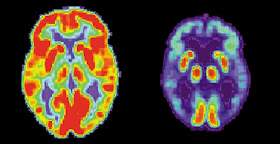Last year's physics Nobel Prize was awarded to a group of three people who discovered one of the most significant recent facts about our universe; the fact that its expansion is accelerating. It turns out that two out of the three laureates had gotten their Ph.D. with Robert Kirshner at Harvard, who among other things has written the excellent book "The Extravagant Universe". Kirshner was involved in a big way with the supernova project that discovered the acceleration; he trained dozens of students apart from the two prize winners. He would almost certainly have won the prize had it not been restricted to three scientists. One might have expected him to feel at least a few pangs of regret about not winning. But even if he did, his response to his daughter which she published in this week's Science is worth reading:
That's a lesson which, while contrary to the common human emotions of jealousy and vanity, seems to be alive and well in scientists like Kirshner and it's worth always keeping in mind. Science is inherently a community enterprise; even the science done by supposed loners like Newton and Einstein would not have been possible had it not built on a body of work extending back several centuries. The culmination of this body of work is what's real. The prizes are incidental.
One morning this past October, I woke up to find an email from my father. Reading the subject line, I immediately burst into tears. My father, Robert Kirshner, is an astronomy professor at Harvard University. The subject of his e-mail was, “My Students won the Nobel Prize!”...I was worried because I knew my father to be incredibly competitive...But as it turns out, his response to not winning is the lesson I really value. When I spoke to him that morning, he amazed me: He was proud of the people he has worked with and taught; he was generous-spirited; he was funny; and he had perspective. What a relief! It turns out that a guy who spent his life trying to understand the immensity of the universe could put into perspective the relative importance of which particular earthling took home the ribbons and the medals and got to bow to the King of Sweden. It turns out that what was really important to him was the work itself, the wonder of this extraordinary universe, the honor and the fun of trying to figure things out, and maybe, just a little bit, the thrill of the chase. I admire all the terrific scientists who contributed to this greater understanding of the universe we live in, but in particular I admire my father, whose expansive understanding of what really matters taught me something of astronomical importance.
That's a lesson which, while contrary to the common human emotions of jealousy and vanity, seems to be alive and well in scientists like Kirshner and it's worth always keeping in mind. Science is inherently a community enterprise; even the science done by supposed loners like Newton and Einstein would not have been possible had it not built on a body of work extending back several centuries. The culmination of this body of work is what's real. The prizes are incidental.








